Elver Barker Carl B. Harding | ||||||
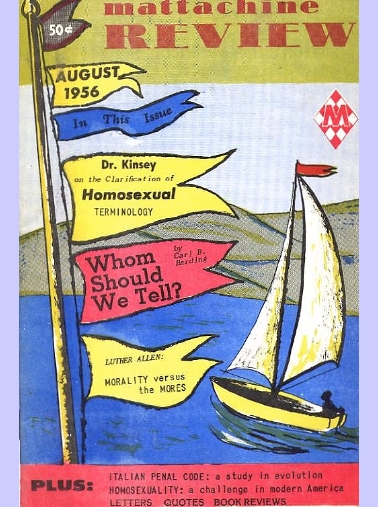 | ||||||
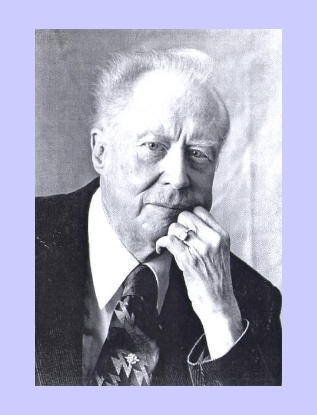 | ||||||
2 Elver Barker paintings for sale, see bottom of the page for images and links to the sellers. | ||||
 | ||||
Elver Barker was and artist, teacher, gay and human rights activist who was one of the early officers of the Mattachine Society and an editor of the Mattachine Review. In 1953, he lost his job at the Alameda County welfare office when a supervisor figured out that Barker was gay. He then became among the most active members of the Mattachine Society. Out of fear for losing his job as a schoolteacher for being a gay activist, he operated under the name Carl B. Harding, which he signed to articles he wrote, letters to the editor of local newspapers and when quoted in newspaper reports. "We were afraid we'd lose our jobs," Barker recall to Westword on the occassion of the 1999 Gay Pride Parade. "I loved my work," Barker said of one lost job. "But one day, my supervisor said to me, 'We all live in glass houses around here.' And when he said that, I knew I was being discriminated against." Barker also edited the Mattachine Education Handbook, “a resource dedicated to fighting discriminatory policies such as a standard practice that law enforcement agencies used to illegally entrap gays.” In 1956, Elver moved to Denver to become a teacher and established a local Mattachine Society. His role with the Mattachine is documented in the book Behind the Mask of the Mattachine to be released in the Fall of 2006. His correspondence as a Mattachine Officer is preserved in the New York Public Library.
UPDATES 2009: detailed memories from Roxanne. UPDATES 2008: detail packed interview with William Watts & Elver painting for sale - below. Also a huge cache of Elver's letter's has turned up thanks to William. Jere DeBacker explains:
Yesterday in the mail, I got quite a large packet of letters and correspondence from William Watts. The material is to and from Elver and a couple of "friends" who were Christians. They enjoyed praying for him and working on getting him to see the "light of Jesus". It didn't set well with Elver and they wrote back and forth endlessly. The tone can get pretty stern, but then he'll end a letter with something like "best wishes to you always" or "with every good wish". I think they enjoyed the fight - if you could call it that. You'll have to read it to believe how much they went at it and for such a long period. It really gives a great insight into Elver's personality in his own words. And - it is filled with interesting historical information about the gay movement. It looks like Elver answered them in response to a "letter to the editor" in the news paper and the correspondence started. They would also have lunch sometimes anddebate the subject of Christianity, the Bible and Homosexuality. Elver was very tenacious and didn't let up a bit. At the time of the "non-memorial" memorial we had for Elver in September of 2004, someone - I believe the Christians left this packet of correspondence. I don't remember how William ended up with it, but he was familiar with the discussion that they had had, so I think he took it.
Barker's passionate 1956 article WHOM Should We Tell? begins:
“Should I tell my parents? my brother? sister? Should I confide in my fiancé? my closest friends and associates? How can I tell my wife? My husband? My son or daughter? Do I dare let it be known to my employer? What good would it do? What possible harm?
At least some of these questions come to the minds of most homosexuals at some time or other under the varied circumstances of their lives.
It is an undeniable and uncomfortable fact that we homosexuals ourselves are largely responsible for the aura of ignorance and prejudice which enshrouds us. We are responsible because of our silence. And our silence is rooted in fear. No human being should have to live in fear of his fellowmen. The homosexual’s fear is caused by the prejudice of society which we have failed to enlighten. We are caught in a vicious circle of our own maintenance.
Prejudice and discrimination are rooted in ignorance. Ignorance can be dispelled by truth. We can no longer afford to live by the medieval doctrine, - Keep the people in ignorance and our salvation is assured. We can bring a close to the era of hush and pretend...”
His 1955 article concludes:
“ And it is within the experience of love, more especially of being mutually in love, that the deepest happiness is found, no matter whether that love is between persons of the opposite or of the same sex. The nature of love is the same.”
Those articles, his bio and obit both written by him, and other informantion follow below as do galleries of his artwork and photographs.
Geoffrey W. Bateman wrote:
Over Labor Day weekend in 1959, the Mattachine Society held its yearly national convention in Denver, which was the first and only time that Mattachine held its annual meeting outside of California or New York. D'Emilio (in Sexual Politics, Sexual Communities. The Making of a Homosexual Minority in the United States. Chicago: University of Chicago Press, 1983) argues that this conference marked a major turning point in the national reach and visibility of Mattachine organizing. The conference also greatly affected the local Denver homophile movement.
Based on the ideas of Denver-based organizers, the conference included a new approach to dealing with publicity about Mattachine's activities. The new strategy evinced great courage, but it backfired on Denver activists, leading to the demise of the Denver chapter of the Mattachine Society.
One of the local Mattachine leaders, "Carl Harding"--a pseudonym for Elver Barker--suggested that Mattachine hold a public press conference, in which the officers would allow themselves to be photographed and interviewed with their own names.
D'Emilio writes that this new approach to working with the press paid off. Both the Denver Post and the Rocky Mountain News covered the conference, treating the movement in a rational and fair manner. The publicity increased membership, but it also brought the unfavorable attention of the police.
A few weeks after the conference, the police raided the homes of a number of the officers, which led to one of them being imprisoned. Others lost their jobs, and many more simply panicked and stopped attending Mattachine meetings and functions. (http://www.glbtq.com/social-sciences/denver,3.html)
Elver spent most of the Sixites in back in Wyoming. When he moved again to Denver in 1972, Barker was now self employeed and at last could come out of the closet as an openly gay man. His Denver Post obituary reported:
He established Timberline Studios in a Capitol Hill apartment dominated by his canvases and art supplies, with a small bedroom that a friend described as "almost monastic."
In Colorado, Barker resumed his avocation as social activist, marching in demonstrations protesting the Vietnam War and rallying support for civil rights. He donated dozens of his paintings to charity auctions raising money for the Human Rights Campaign, the Rainbow Vegetarians, and LaGente Unita and other Chicano advocacy groups.
In 1999, Barker was one of the grand marshals of Denver's PrideFest Parade, an event inconceivable during his years with the Denver Mattachine Society - an organization whose name was only hazily familiar to most of the younger, vociferous people marching in the parade.
Barker died at an assisted-living home. He left no survivors apart from the two cats he doted on and called "my psychiatrists."
I met Elver only once. We were both exhibiting artists in the Boulder Public Library’s gay themed show “Caste of Stone” in 1994. I was told that he had been a pioneer in the early days of the gay movement. That was years before my extensive research into various characters and aspects of 20th Century American gay culture. I wish I could meet him now and interview him.
Recently at a party I met Jere DeBacker. He graciously spent time at my sprawling website looking at my art and investigations into gay artistic characters Frances Faye and the fascinating Bruz Fletcher. He thought I’d be interested in his friend Elver Barker. I suggested that we build a website for Elver. I told him that my fledgling sites for Bruz and Fran grew tremendously once people found them on the web. Jere was the executor to Elver’s estate. He provided the artwork, bios, photos and comments that are here. I run the online Index of Early Gay Publications and actually had copies of the Mattachine Review articles that are posted here.
Anyone who has additional artwork, memories or info about Elver, please feel free to contribute to this site. Email Tyler at Tyler_Alpern@yahoo.com
Thanks,
Tyler
Excerpts from Jere’s emails :
I had a friend - an artist, Elver Barker who was one of the very early members of the Mattachine Society. (possibly one of the first six, but I'm not sure) He was fired from a social work job in San Francisco for being gay in the 1950's if you can imagine!! He lived and taught art here in Denver for many years after working in San Francisco and his home state of Wyoming. He passed away in 2004 at the age of 84.
I do have at least three of his paintings, two oils and a pastel. One oil is quite different for him and is a landscape with a log cabin and Pikes Peak in the background which he did in 1986. Another of Devil's Tower. He grew up there and two friends and I took him up to that area in 2001, so he could take photos and paint from them. The pastel is a large butterfly, which I enjoy, too. I have given a couple of others away that were pastel flowers. He was an interesting character. I'm in touch with one of his very close long time friends, if you ever want any more information about his life and activities.
Elver had written an autobiographical account of his life, but it was never published. I was his estate executor, but there wasn't a lot, as he had given away most everything and had moved into an assisted living facility a year or so before his death. He was an interesting man and we had a nice friendship, although he was most peculiar in many ways, too. (Aren't we all) Elver was very proud of that finger-painting book. He had written a revised edition, but it was never published. A woman in Ft. Collins has it and was going to keep trying to find a publisher, but I don't think that has happened.
I have two bios that Elver wrote himself. One tells a lot about his role in the Mattachine Society, his early involvement and the 1959 convention which was held here in Denver and then another in NY where he was honored for putting together the "Education Handbook". He served on the national board of directors and as director of education and on the editorial board for the "Mattachine Review". He came back to Denver in 1956 and founded the Denver Chapter of Mattachine and was sect/treasurer until he moved back to S.F. He used to collect every single article with any mention of "gay" he could find in every local and national publication and mail it to someone in California who was compiling a gay archive. It goes on and on.
I was talking to a friend who has a very good example of Elver's Bristlecone Pine finger-painting. He would be very happy for it to be photographed and put on the website. It is quite similar to the one in the professional black & white of Elver in the straw cowboy hat at the easel. Most of his trees were in a two tone scheme (there is probably a better word in the artist vernacular) and Mike's is gold and black. Quite interesting work. Once in a while he did one in full color. He told me once that he liked bristlecones, because they were survivors of the best order - just like homosexuals.
Looked at the articles you scanned and sent. How interesting they are and I can hear Elver in them. He was younger and not as experienced, but I could hear the same determination that he had all his life. I think Elver became quite a lot more hardened in his old age. Yet, he was always like a child at an amusement park when he witnessed something like the Gay Pride Parade. I saw him once teaching a bunch of young children about finger painting. He fairly danced among them, he was so excited at their enthusiasm and their inhibition in painting. He was also very very anti religious and seemed to me to be anti spiritual, too.
| ||
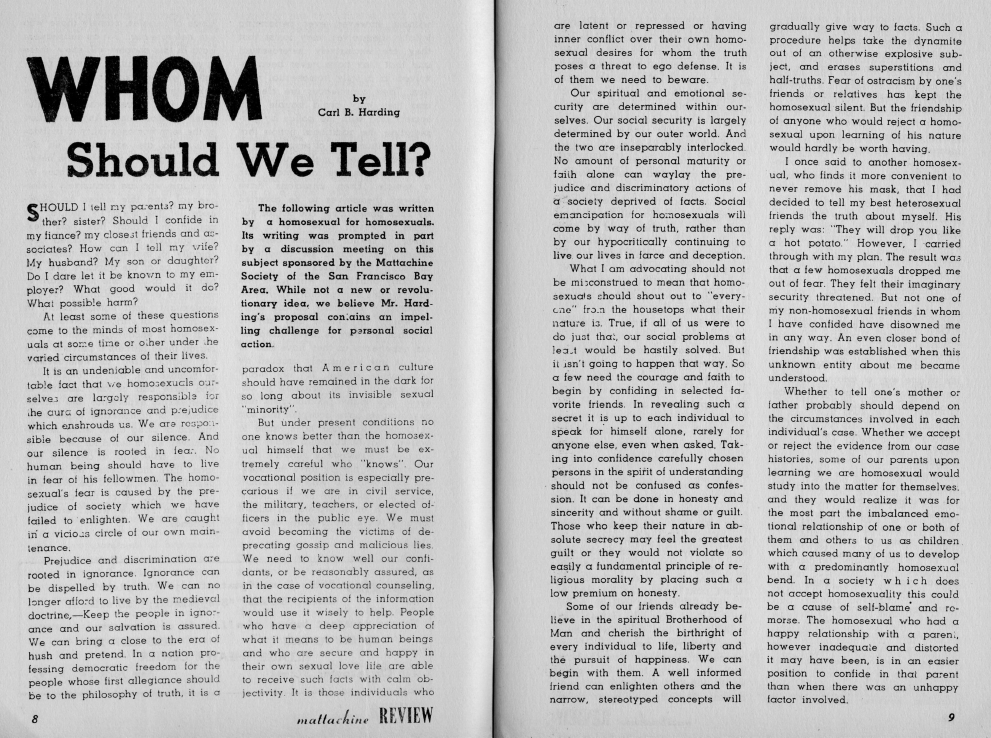 | ||
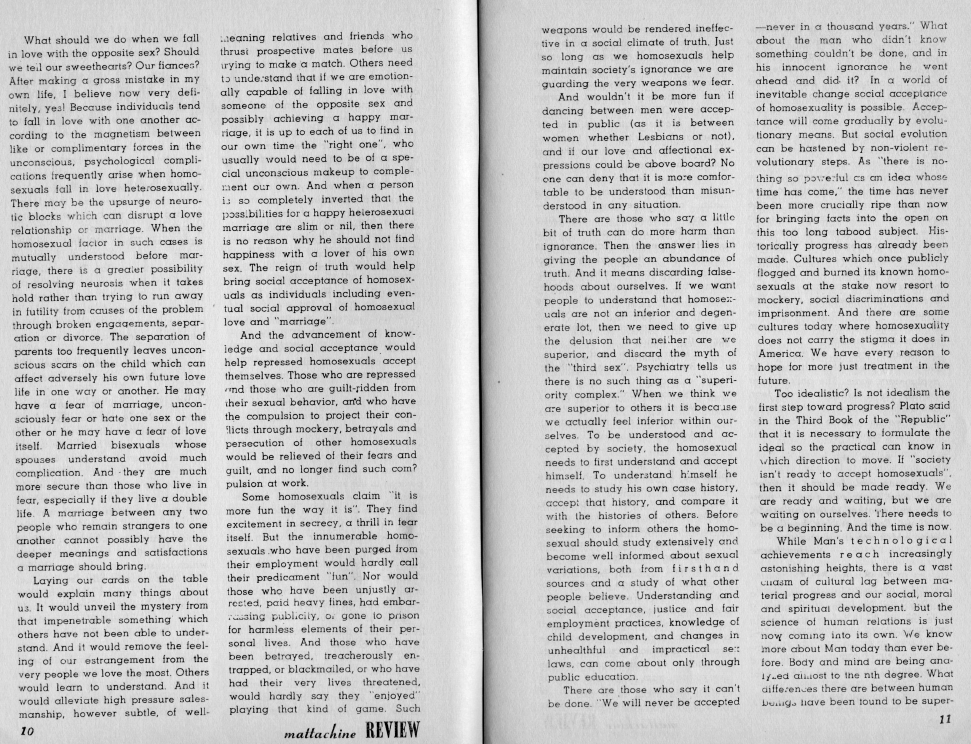 | ||
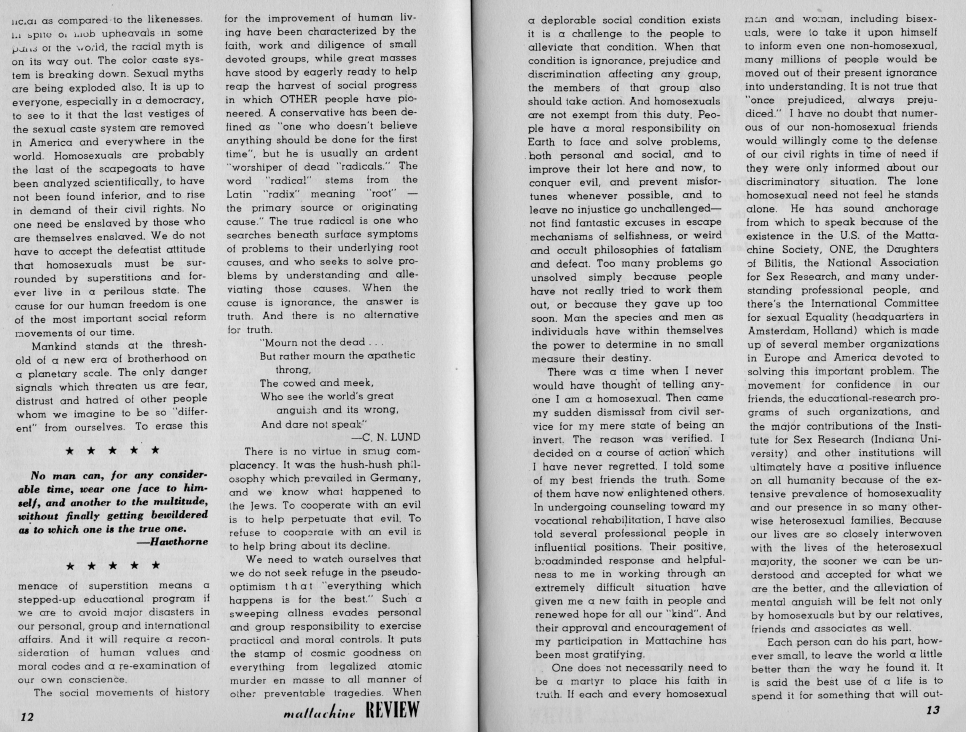 | ||
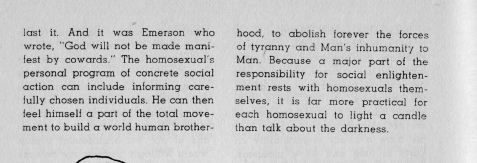 | ||
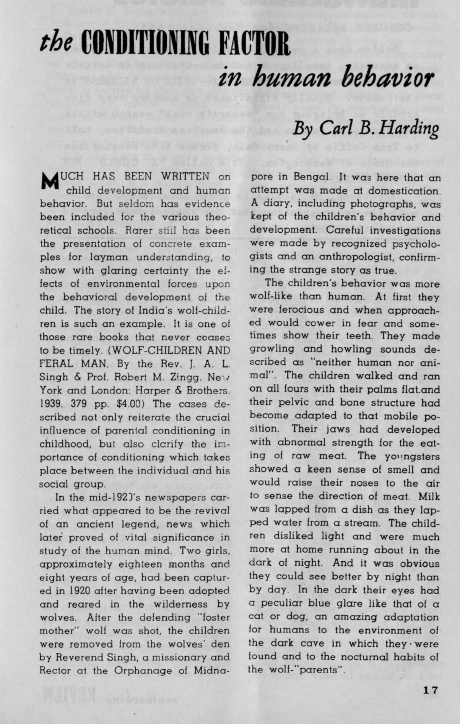 | ||||||
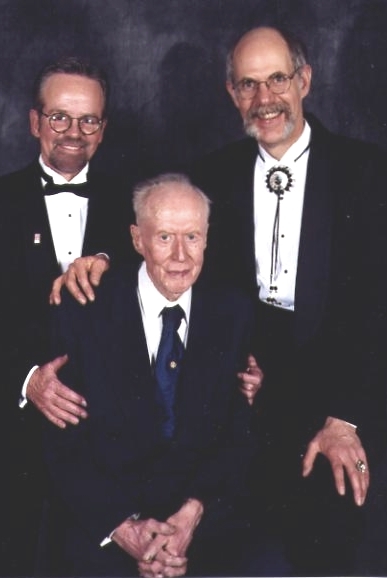 | ||||||
Hank Cato, Elver Barker, Jere DeBacker at the HRC dinner circa 2000. Note the non-toxic oil pigments on Elver's fingernails. Photo courtesy of Jere DeBacker. | ||||||
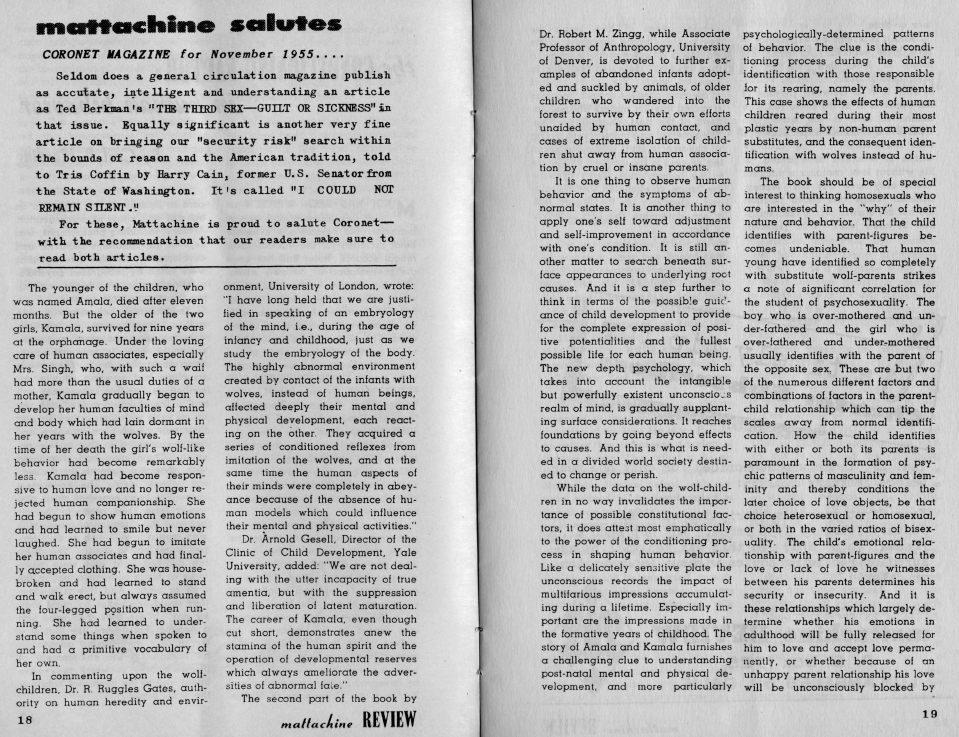 | ||
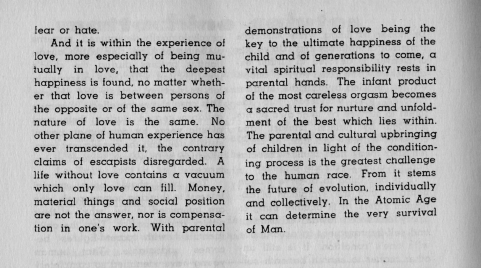 | ||||||
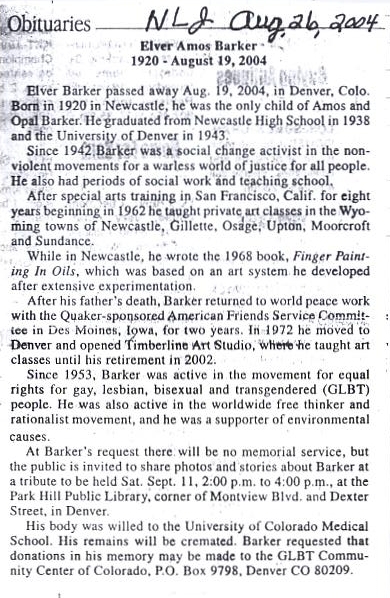 | ||||||
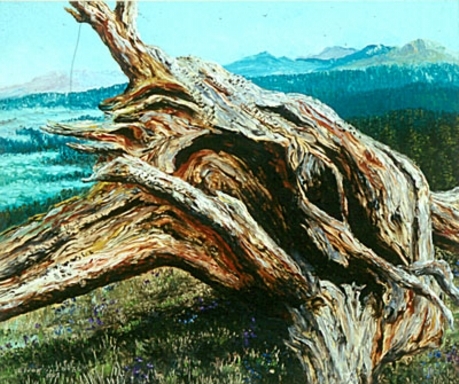 | ||||||
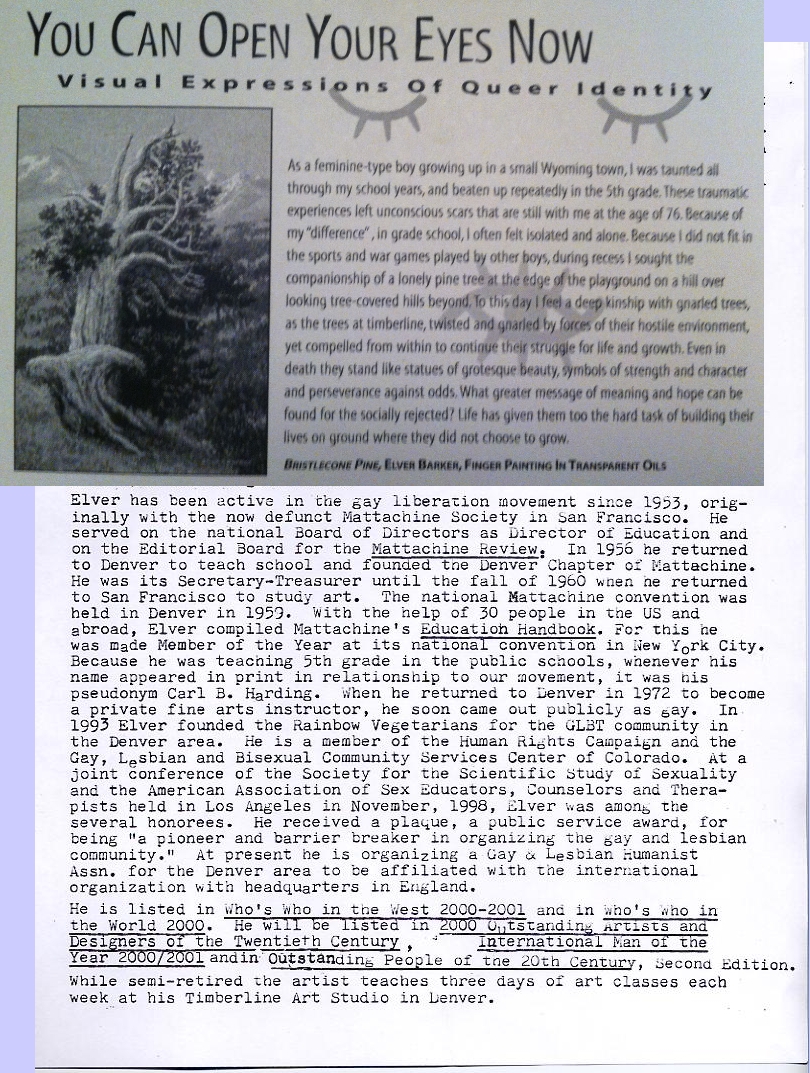 | ||||
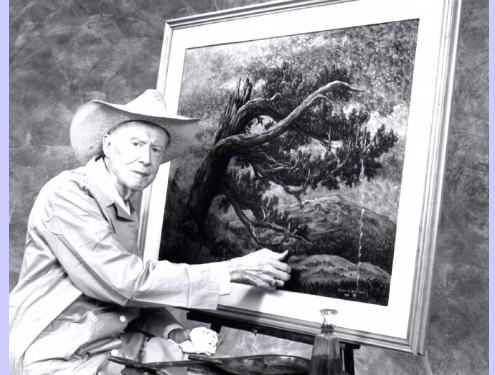 | ||||||||
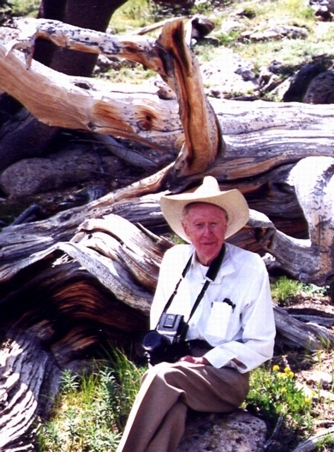 | ||||||||
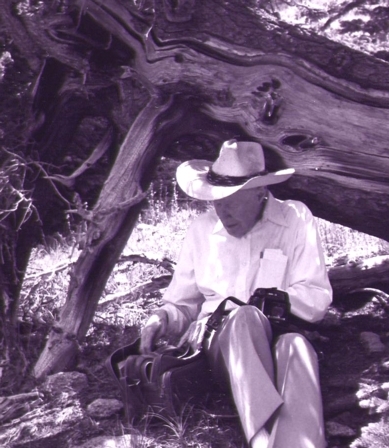 | ||||||||
| ||||||||
In Elver's words:
Elver Barker was born in Newcastle, WY in 1920. Being a specialist in organizing, he has been a social-change activist since 1942 in the non-violence movements for a warless world of brotherhood and justice for all. He is also active in the Rocky Mountain Skeptics for a rational alternative to the pseudo-sciences.
His AB in Education is from the University of Denver. His major art training in representational oils and pastels was under the late Arthur W. Palmer and Thomas Leighton in San Francisco. He has also attended workshops taught by Daniel E. Greene, Ben Konis, Mel Fillerup, and the late Merlin Enabnit and George Cherepov.
While he paints a wide variety of subjects, one of his specialties is still lifes...the beauty in simple things. Through extensive experimentation he developed finger painting in transparent oils, in which, as many effects are achieved by the removal of colors as by their application, leaving the color of the support showing through. His book Finger Painting in Oils was published by D. Van Nostrand in 1968. The artist's specialty in this unique technique is gnarled trees, especially Bristlecone Pines at timberline which he photographs and uses as models. Natural woodgrain patterns are produced by the whorls on the thumb. Now after 30 years of further experimenting, he is working on a revised edition, Finger Painting in Transparent Non-toxic Oils.
The artist has also developed feather painting in transparent oils...abstract expressionism symbolizing the sounds of music. Some of these are rhythm paintings...done after and while listening to music. After publication of his book, Elver was interviewed on channel 9 (in Denver). The photographer focused on several of his oil finger and feather paintings while he described them. That weekend May-D&F had a large display of his finger works in the window for two days. During that time he demonstrated the technique in the book department and autographed sold copies of his book. He was also interviewed by the late Bill Barker and Mrs. Barker on KOA radio (in Denver).
"Today's Art" devoted five pages to his well-illustrated article: Finger painting in Transparent Oils". The artist has had 39 years experience in teaching drawing and featherpainting in transparent oils in Wyoming, South Dakota and Colorado. He has given lecture demonstrations and workshops on his finger and feather painting in these states and also in Nebraska and Kansas. One of his oil finger paintings "Christmas at Timberline" was published on a Christmas card by the former Lazy BL ranch publishers in Cheyenne.
Just before Christmas 1982, the people in all of his classes surprised him by converging on his studio during class and presented him with a check to go to Hawaii to photograph flowers, something he had long wanted to do. Two representatives from Channel 2 News were there. He went to Hawaii in late March, after the rainy season, visited three islands for three weeks, and took over 300 photographs of flowers from which he and his students are still painting. He likes to greatly enlarge flowers for their decorative value, having been inspired to do this after seeing the work of Georgia O'Keefe.
Elver was rated qualified by a jury of the Rotary Club to submit each year, Three slides of his paintings for consideration as entries in the annual Artists of America exhibit sponsored by the Rotary Club and the Colorado Historical Society. Most of the exhibitors are big name artists, but the work of a few lesser-known artists have been selected each year. Because of the large number of lesser-known artists competing, he never achieved this goal. | ||
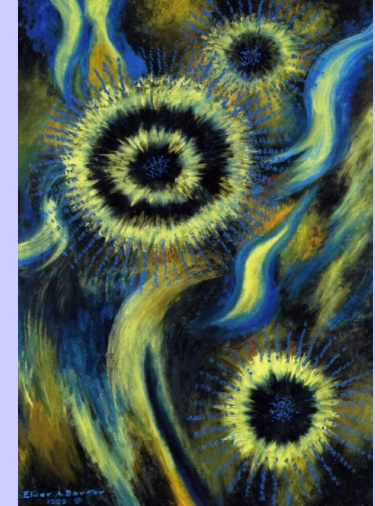 | ||||||||
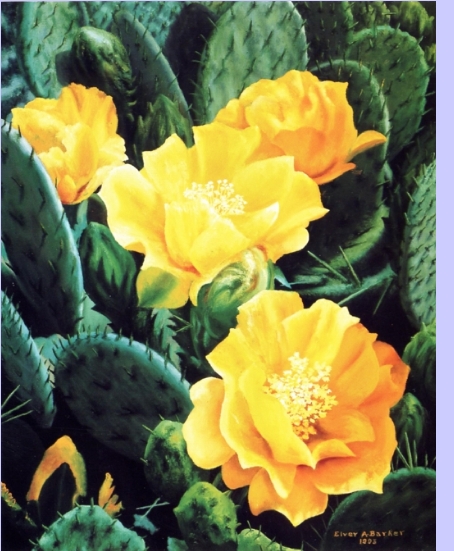 | ||||||||
Pickly Pear Cactus | ||||||||
Oil On Pavement After Rain No.II 38" x 27" Oil / Canvas | ||||||||
Notes from an interview with William Watts, December 2007, Others remember Elver: William was 18 and Elver was about 48 when they first met. William really didn’t think about men at that time. Elver didn’t look or act his age. Elver was living in Wyoming in 1967 and 1968. One of Elver’s many activities was editing the Wyoming version of “Fellowship of Reconciliation” FOR Newsletter. He frequently wrote letters to the Editor that were published in the Casper Tribune. In those letters Elver expressed being in favor of ending the Vietnam war, he offered various nonviolent solutions and wrote about Socialism. William saw the letters and because newspapers published the addresses of the writers in those days, William was able to write to Elver. William was becoming a Conscientious Objector and Elver sent many letters of support and assorted article clippings. The two men first met when Elver came to Buffalo where William was living to give an art class, but they did not really have a chance to visit at that time. William later attended Sheridan Junior College and Elver came there to do a workshop and they connected again. They only met those two times in those first two years, but Elver continued to send William all kinds of literature about the peace movement. William eventually came to realize that he was gay, then was sent to Denver for 2 years service when the draft board accepted his Conscientious Objector request and at some point Elver came to Denver on vacation or something and they spent time together. Elver was anti-religion, skeptical and intolerant {maybe even fearful - because of what he had experienced at the hands of religionist} of any kind of superstition, astrology, mysticism, etc. Elver would produce his annual Christmas letter and once William helped by edging the pages in black using markers. Elver wrote volumes. They became very close and continued their rich correspondence. Elver was living in Des Moines. Elver was working at the AFSC American Friends Service Committee after his dad had died. William visited Elver in Iowa and a highlight was when they took a bus to Chicago to see “Hair”. During the few years that Elver lived in Des Moines he chose to live under the taxable income level so that he would not have to pay “war tax.” Elver lived in a simple room and donated his first year salary from when he was teaching art. Later he withheld “war taxes” from his taxes and the government would have to forcibly take it plus a penalty. Elver told William a lot about his life. During his years in San Francisco, Elver often either met men at the YMCA or in the nice social circle moved in there. He mostly met men thru other people. They would dress up nicely for all social events and going to clubs like Finochhio’s. Earlier, Elver had been a volunteer at the “United World Federation.” Visiting Denver from Wyoming, he first stayed at the YMCA and may have even lived there earlier when he attended D.U. Then there came a time when security would tiptoe about and try to find men together and then throw them out. Elver wrote the YMCA about how cruel that was and that he would no longer stay there. Elver worked on his book refuting superstition throughout his whole life. Elver went along on the AFC bus to Washington. Elver had been involved with the Congress of Racial Equality trying to integrate restaurants. He and a racially mixed group would show up nicely dressed at a restaurant and sit all night at tables and the staff would just ignore them and not serve them. But they still left a generous tip as they knew that most of the staff was not allowed to serve them and the staff lost tip money by not being allowed to serve them and have the table taken up all night. There exists a picture in a textbook of Elver wearing an earring in an early gay rights march “rallying the troops.” Elver was very proud of that. Elver first became so antiwar early on when he saw pictures of the horrors of War in Europe after W.W.I. At some point, Elver started the Denver Gay Vegetarians called the Denver Rainbow Vegetarians. Elver had become vegetarian purely for ethical reasons. It was a very organized group and Elver had very good organizational skills. In the 50’s, his pastimes in Denver included square dancing at the Episcopal Church. It was an integrated group but some attendes from the suburbs were just a little uncomfortable. Elver would write endless letters to the editor or city and no issue was too big or small. He would write about global issues or chastise the city about trash can construction. He would often remind Ann Landers to “think, Ann, think. William describes Elver as “not a free thinker, just a non believer.” Elver was really irate about anything religious or having to do with astrology. William disappointed him as at different times in his life William was Catholic or Communist and Elver considered people who followed either to be “slaves” or “slavery people. “ He fought with and sent 2 - 3 letters with one being very long to the Archbishop of Denver who was not moved by Elver’s manifestos. There was an idiosyncratic quality to Elver in that he was totally committed to ideals of freedom but he denied people the freedom to practice religion and never really saw the contradiction in that. Elver could in fact be quite harsh. He typed up by hand cards with the phone number of Denver Mental Health and the line, “I work for my money, I suggest you do the same” and would give them to people who begged for money. William refused to allow him to do that in his presence. Elver would advise the much younger William “not to become a barfly or hang out at the baths.” William explained that “he was free with advice but not in a superior or mean way. Most of what he told me was very good.” Years later toward the end, he became very angry that William was planning a memorial service for him and William offered to give Elver an opportunity to appear at the actual service and stop it. When the time came Elver didn’t appear and William’s service pressed on. William adds: ... I hope the “warts” I’ve revealed hasn’t changed or diminished your view of Elver. No one who lives to be 84 is perfect and Elver was one of my most favorite people for over 30 years... I think I feel a bit protective of Elver and his rich and tremendously important {and unrecognized by the ‘gay’ community and others} history.Elver Barker was my second cousin—1st cousin of my dad Irwin Roadifer. When we moved to Colorado Springs from Wyoming in 1961, Elver was a frequent visitor in our home and we loved to visit him (and his cats!) in Denver .
From a cousin: One visit I especially remember was a photo and hiking tour of the Arkansas River Canyon above Canyon City in the early ‘60’s. We hiked all day with Elver taking photos of his beloved weathered trees. He then produced a painting of one of those trees—monochromatic greens-- and presented it to my parents as a gift. On the death of my parents, I now have that painting and the fond memories it holds. On that same visit, he purchased a painting of bright red flowers at a Colorado Springs gallery, which had the real petals of the flower placed in collage in the painting—he thought that technique was fascinating. I now wonder what has happened with that painting and the few but meaningful possessions the Elver called his own. My father had great respect for the kind, gentle and committed soul that Elver was, and shared that with all family members. He was the first person I knew to be openly gay and I’m glad that my family was aware of that and held him true to our family heart—long before gay rights became a national issue, we knew it was indeed an important personal and family issue. The last time I saw Elver was in the fall of 2003 on a visit to Denver with my mother Ellen, soon after she was diagnosed with cancer. At that time we knew that Elver was also not well and had plans to move into assisted care. He invited us to share a meal with painting class members at a marvelous restaurant in LoDo and I’m so glad we had that day. I lost track of Elver’s address as I moved several times after, and have just recently been notified of his death, at a family reunion. We were all blessed to have him in our lives and will carry on his gentle spirit and caring nature. Sharon (Roadifer) Farquhar, Casper, WY July 2, 2007 I have two large oils of Elver's. One is of Pansies and one of yellow buttercup. I also have a pastel and a finger painting. All were framed by Elver except for the finger painting. All hanging proudly in my living room, which ALWAYS pleased him. I went to visit him shortly before he went into assisted living and purchased the finger painting.
Dear Tyler, This weekend I finally took it to have it framed and began remembering him..So I found you on a website. My story is a bit different about him. I always loved him dearly, as a friend, as a father figure and as a teacher, not only painting but life. I met Elver when I was 19 years old (I am 55 years old now). I took painting lessons from him on and off for all of the years that he taught. Many times we would paint together just the two of us while listening to Johnny Mathis (one of his favorite singers). We would just hang out (big age difference) he was such an intelligent and gentle man. One day, (when I was young, about 19) I asked him.."Elver, why didn't you ever marry?" His answer was (to this very young girl, who had come from a small town in Wisconsin and really never heard of gays or lesbians) "Well, I just never had time. I studied in Europe and I took care of my mother". Later in life I had always thought that he must have felt I was too young to tell me that he was gay. Now I figure, it just was not an issue and never should be. For many years, Elver did not own a TV. So I asked him, "Elver, why don't you have a TV?" (I could not imagine anyone without a TV). He said that there was really not much on TV that interested him except for maybe National Geographic. Later years, he did have a very small TV that he kept in his bedroom. When I was pregnant with my son, I took classes from him. I shared my 1st born with him. He was so kind and always smiled when he saw my child. Later, he told me that during class I was so pregnant that he was afraid I was going to go into labor and he would have to get me to the hospital. Well, that never happened. Through the birth of my second child (final child) and my divorce, Elver was always supportive and just the most wonderful friend and father figure I could ever have. He would talk to me about love and break up. We became vegetarians and then later vegans (no animal products at all) and then back to just vegetarians..(no flesh at all). We joined the vegetarian society together. We went to the pot lucks and a couple of the Vegetarian Thanksgivings (no turkey). I would invite him to my house for Thanksgiving at times instead of doing the Vegetarian Society Pot Luck. He also turned me onto Indian food. Elver was on heart medicine. When he was vegan, he asked his doctor if he could go off the meds, he was told no. Later, he said that he was able to stop taking the meds. He told me that this med keeps his heart going. I hope because he was off of the med that it did not contribute to his death. On Thursday nights, we would go to Govinda's for dinner, it was vegan night. The other days of the week it was just vegetarian. By this time, Elver was no longer driving. He said that after a few accidents, he decided to give up his driving. He would walk to my house (I lived on Elizabeth st. ) and then I would drive us to Govindas. He loved animals. I would bring my puppy Teddy to his house when we would paint together..(my Teddy will be 18 years old this December, he is a peekapoo). Elver once told me that when he was a boy, his father, uncle and Elver went hunting. (Never understand why fathers think that the killing of animals is a right of passage from boyhood to manhood). Elver said that he did not shoot but hisuncle shot and wounded a deer. The deer cried so bad, just like a baby crying, that he never forgot it and never hunted again. His uncle did shoot it again and put it out of its pain (poor little creature very sad). It was not until I was in my 40's that I realized Elver was gay. We never discussed it. It was not important. It did not change the wonderful person that he was. It did not change my admiration and love for him. It was just not an issue. It was amazing to me that he knew when the time was that he should go to assisted living. He must have known his time was near. I am so glad that I saw him before he went and gave him a really big hug. Every year, he would send me his post card for Christmas with a little note. Christmas 2004 I did not receive a card. I called Serenity Home to talk to him, that was when I found out of his passing. I felt terrible that it had been months since I spoke with him and through all of the years, I did not get to say goodbye. Maybe the hug was my goodbye. I did find out that someone adopted his beloved cat. That was good. All in all, I will remember him always. His love for animals, they made him smile. His kindness. His intelligence. His talent for writing and for art. All of the time we spent together. Fighting with him when I wanted to paint (by brush) a mountain and tree scene using only two colors. He said it would not look like a landscape, when it was finished, he said that he was wrong and it really looked good. He would always put a little bird in his paintings and he would say when painting the foliage on a tree, leave openings for the birds to fly through. Did you know that he started painting large flowers after he went to Hawaii and saw how large and beautiful the flowers were. He took many pictures of them. I loved him so and I miss him dearly. I think of him every day. I walk into my living room and see his work. Thank you for keeping his memory alive with your website. Roxanne | ||
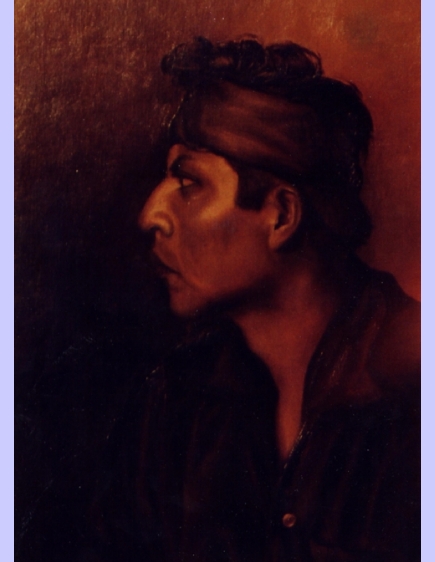 | ||||||||||
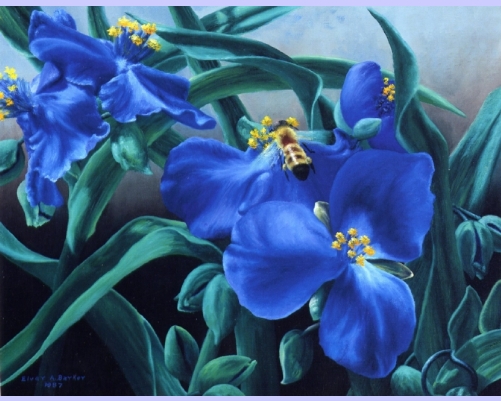 | ||||||||||
Spiderwort with Bee 24 x 30 | ||||||||||
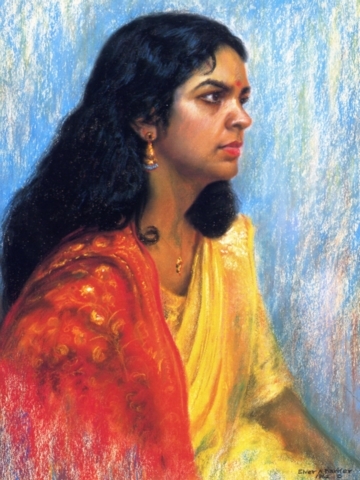 | ||||||||||
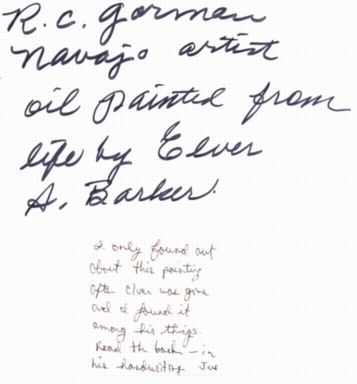 | ||||||||||
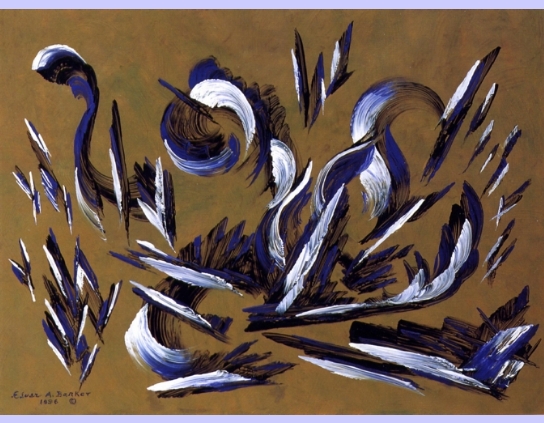 | ||||||
Girl of India Pastel 21 x 27 Painted from life in San Francisco 1962. Posed by Miss Rachel John, student at the University of California and staff member of the India Tourist Bureau. Jere adds: I think was his favorite work. He kept that hanging in his home and studio until nearly the end of his time there. He sold it to a friend, I believe. He was quite proud of that drawing. | ||||||
Violin Concerto Valse Scherzo Op. 34 - Tchaikovsky Feather painting in transparent oils. An example of rhythm painting - done while listening to music. | ||||||
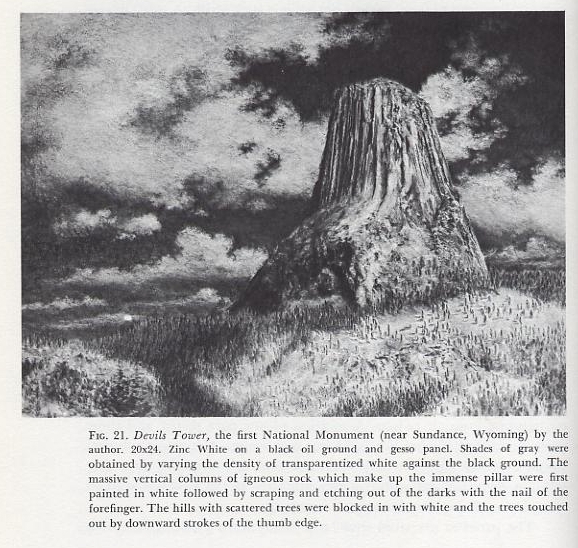 | ||||||||||||||
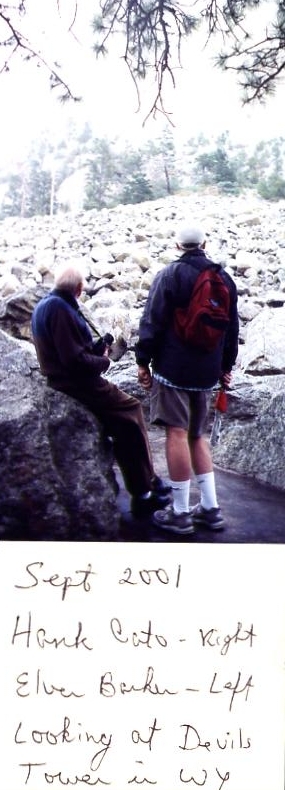 | ||||||||||||||
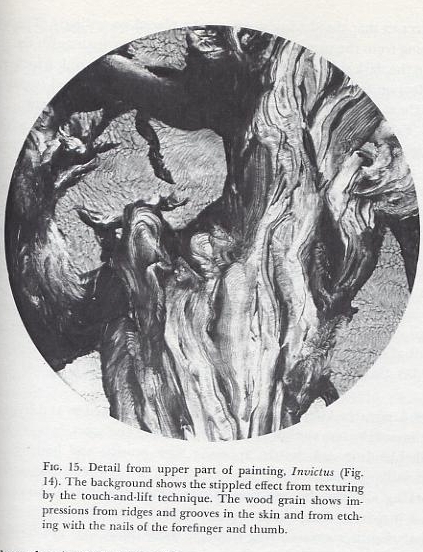 | ||||||||||||||
Jere adds: He grew up near Devil's Tower and two friends and I took him up to that area in 2001, so he could take photos and paint from them. | ||||||||||||||
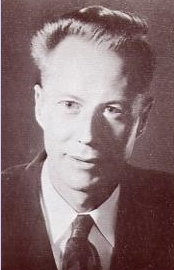 | ||||||||||||||
Pages from Elver's finger painting book. | ||||||||||||||
1968 | ||||||||||||||
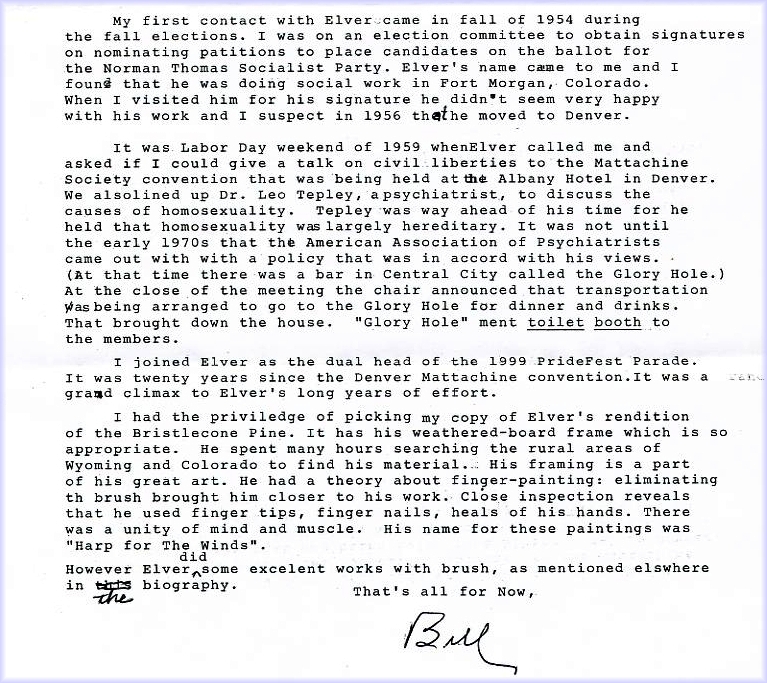 | ||||
2006 letter from Bill Reynard, founder of Colorado's ACLU in 1952. | ||||
| ||||||||||||||||||
INDEX Mattachine Review | ||